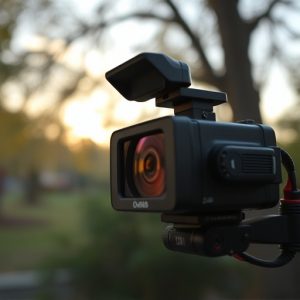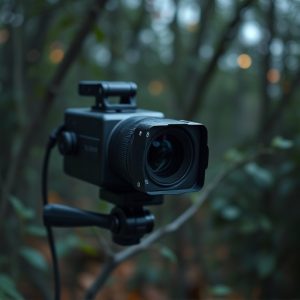Night Vision Spy Camera Detection: Reflecting Light for Indoor Security
Indoor Spy Camera With Night Vision detection utilizes manipulated light reflection to reveal hidden…….
Indoor Spy Camera With Night Vision detection utilizes manipulated light reflection to reveal hidden cameras, especially at night. Night vision technology enhances visibility, allowing precise analysis of reflections for proactive surveillance. Strategically placed lighting and careful observation are key to uncovering covert cameras in corporate, government, or residential spaces, ensuring safety and privacy protection from unauthorized observation.
Uncover the insidious world of hidden surveillance with our exploration of advanced spy camera detection methods, focusing on light reflection techniques. Understanding how light interacts reveals a powerful tool for identifying covert cameras, especially in challenging indoor environments equipped with night vision technology. This article delves into the science behind these methods, offering practical insights on detecting indoor spy cameras using light reflection. We also explore emerging advancements and their implications for future surveillance countermeasures.
- Understanding Spy Camera Detection: The Basics of Light Reflection
- Night Vision Technology: Enhancing the Detection Process
- Practical Application: Using Light Reflection to Detect Indoor Spy Cameras
- Advanced Techniques and Future Prospects in Spy Camera Detection
Understanding Spy Camera Detection: The Basics of Light Reflection
Spy camera detection, especially in indoor settings with night vision capabilities, relies on understanding light reflection and its manipulation. The basic principle revolves around altering natural light to reveal hidden cameras. When light encounters a surface, it reflects, and by controlling this reflection, specific patterns can be created that expose the presence of surveillance equipment. This technique is particularly useful in low-light conditions, such as during the night, where traditional camera sensors excel.
Night vision technology plays a pivotal role here. It enhances visibility in dark environments, allowing for more precise analysis of light reflections. The indoor environment, with its various surfaces and obstacles, presents unique challenges. However, by employing strategic lighting sources and careful observation of reflections, individuals can now proactively detect hidden cameras equipped with night vision, ensuring a safer and more secure space.
Night Vision Technology: Enhancing the Detection Process
In the realm of spy camera detection, particularly for covert surveillance in low-light conditions, night vision technology plays a pivotal role. This advanced capability allows for enhanced visibility and improved accuracy during the detection process, making it an invaluable tool for security professionals and privacy advocates alike. By leveraging specialized sensors and image intensifiers, indoor spy cameras with night vision can capture clear images even in complete darkness, ensuring that secretive surveillance activities do not go unnoticed.
The integration of night vision technology in spy camera detection offers several advantages. It enables the identification of miniature cameras hidden within various objects, such as light fixtures or electrical outlets, which might otherwise remain undetected during regular visual inspections. This capability is crucial for maintaining a secure environment, especially in high-risk areas like corporate offices, government facilities, and residential spaces where sophisticated spy cameras can be employed for unauthorized surveillance.
Practical Application: Using Light Reflection to Detect Indoor Spy Cameras
The spy camera detection light reflection technique is a practical application that leverages the power of light to uncover hidden surveillance devices, particularly in indoor settings equipped with night vision capabilities. By strategically casting light onto potential hiding spots, such as corners, ceilings, and walls, any reflected or distorted light can be indicative of an Indoor Spy Camera With Night Vision. This method is especially useful in homes, offices, or hotels where the risk of covert surveillance is heightened.
The technique works by observing the natural reflection and refraction of light off objects. When a spy camera is present, its lens can cause unique distortions or aberrations in the reflected light, alerting individuals to its location. This approach does not rely on electronic signals or specialized equipment, making it accessible for anyone seeking to safeguard their privacy in enclosed spaces.
Advanced Techniques and Future Prospects in Spy Camera Detection
The evolution of spy camera detection methods has led to a sophisticated approach, especially with the advent of advanced technologies like night vision capabilities. Indoor Spy Camera With Night Vision detection has become increasingly intricate, employing light reflection techniques that can uncover hidden cameras. By analyzing subtle variations in light patterns and reflections, experts can now identify these devices, even when they are not actively transmitting signals. This advancement is particularly useful in high-security areas where the presence of covert cameras poses a significant risk.
Looking ahead, the future of spy camera detection promises to be even more innovative. With ongoing research and development, new techniques may include advanced image processing algorithms that can detect anomalies in real-time, enhancing accuracy and speed. As technology continues to advance, the ability to uncover sophisticated hidden cameras will remain a critical aspect of ensuring privacy and security, both in public and private spaces.
The reflection of light is a powerful tool in the detection of indoor spy cameras, especially when combined with night vision technology. By understanding the basic principles of light reflection and employing advanced techniques, it’s now possible to effectively uncover hidden surveillance devices. This article has explored various aspects of spy camera detection, from the fundamentals to future prospects, emphasizing the importance of staying vigilant in a world where privacy is increasingly at risk. When faced with the challenge of detecting an indoor spy camera with night vision, these strategies provide a comprehensive approach to ensuring security and protecting personal spaces.


